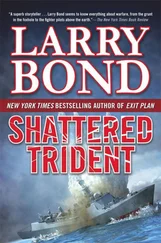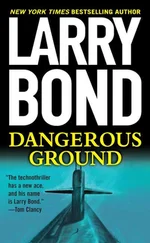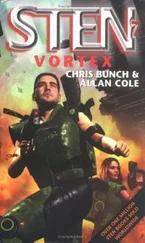Rutenga’s biting flies outside.
” Attention! “
Gen. Antonio Vega strode into the crowded tent and stepped briskly up onto a small dais at one end. A large map of southern Africa dominated the wall behind him. He stared down at his officers for a few moments longer and then broke the silence.
“I will not waste your time with fancy speeches, comrades. The Soviets have given their consent and promise of continued support. We attack at first light tomorrow.”
Excited murmurs rose throughout the tent. Most had never really believed they’d be permitted to carry out their general’s ambitious and audacious plan.
Vega held up a single hand, instantly silencing every voice.
“I do not intend to forget what the delay imposed by the Soviets has cost us in
Cuban blood, but they are with us
now-as are our Libyan and African friends. We go forward together as true comrades-in-arms. “
He nodded toward the map behind him.
“We will attack as planned. There will be no modifications, no further delays, and no excuses. I’ve already cabled
Colonel Suarez. At oh one hundred hours tomorrow morning, our remaining forces in Namibia will engage a South African army three times their size.
They will do this to buy time for us. It is our job to make sure that their sacrifices are not in vain.”
Vega’s voice grow louder.
“You’ve all seen the intelligence reports.
Pretoria’s thugs are reeling, torn and divided against one another. Let there be no doubt in your minds. These arrogant Afrikaners arc ours for the taking. Our comrades in the ANC stand ready to lead their people to freedom. South Africa is ripe for liberation. Together, we stand on the threshold of victory. A victory for Cuba. A victory for the oppressed peoples of the world. A victory for socialism!”
With deep satisfaction, he watched his words send a sudden surge of pride and confidence through the tent. Years of retreat and self-doubt had come close to crippling his country and its allies. But all those doubts and defeats would be forgotten when his tanks rolled into Pretoria in triumph.
FORWARD ASSEMBLY AREA, FIRST BRIGADE TACTICAL
GROUP, NEAR BUBI, ZIMBABWE
Cuba’s First Brigade Tactical Group lay scattered in half a dozen camouflaged encampments around the tiny village of Bubi-sixty kilometers south of the road and rail junction at Rutenga and sixty kilometers north of
Beitbridge, a town on the northern side of the Limpopo River. The “great, gray green greasy” Limpopo formed the border between Zimbabwe to the north and South Africa to the south.
Now, thousands of soldiers and hundreds of vehicles were stirring from their hiding places-from small clumps of trees, shallow trenches covered by dried brush and camouflage, and civilian huts and houses seized for military use. Engines roared to life as drivers revved their vehicles up to full throttle and then let them slide back to idle.
Helmeted infantrymen formed up under shouted orders and waited patiently to board their APCs. In a high-pitched, howling whine of powerful gas turbines, Mi-24 Hind gunships taxied out from under camouflage netting and sat ready for takeoff.
Trucks, their curved sides streaked with diesel fuel, moved from unit to unit topping up mammoth T-72 tanks, and wheeled BTR-60 and tracked BMP-I armored personnel carriers. Ammunition carriers trundled along behind the diesel trucks, piled high with cannon shells, mortar rounds, and boxes of small-arms ammo. Tank crewmen swarmed over their armored monsters, tightening and adjusting tracks and engines. Engineers and medical personnel worked beside them, bringing their own vehicles to full war readiness.
Hours slipped by as the men of Cuba’s First Brigade Tactical Group shook off the lethargy imposed by weeks of concealment and forced inactivity. At last, shouted orders brought the Tactical Group’s battalions out onto the highway-hundreds of vehicles forming slowly into a kilometers-long stream of dense traffic flowing south. They would spend the rest of the day in the “hurry up and wait” cycle of armies everywhere, inching forward as the brigade made the long road march to its assault positions-just north of the
Limpopo gorge.
This first of Vega’s striking forces left behind an abandoned tangle of camps, already rusting coils of barbed wire, and fields scarred by tank tracks.
SECOND BRIGADE TACTICAL GROUP, NEAR PESSENE,
MOZAMBIQUE
Dust clouds lit red by the lateafternoon sun hung low over southwestern
Mozambique’s hills, all converging on a single main road running west.
Engine noises rumbled over the hills like a rolling, unending peal of manmade thunder.
Maj. Jorge de Sousa stood off to one side of the highway, watching in awe as hundreds of Cuban tanks, trucks, and other vehicles lumbered past on their way toward South Africa. He’d never seen so much combat power assembled in any one place. From time to time, pairs of Soviet-made helicopters flew overhead, adding to the general, ear-numbing din.
He stiffened to attention as the lead T-72 rolled by with its commander, a lieutenant colonel, saluting as though he were on parade in Havana’s
Revolution Square. More tanks followed, clattering down the highway in column. Ten. Twenty. Thirty. De Sousa lost count. Close behind the tanks came combat engineering units with special bridging and mine-clearance equipment, armored personnel carriers packed with infantry, ZSU-23-4 antiaircraft guns, and trucks bulging with ammo, food, fuel, and water.
The Mozambican major shook his head from side to side, caught in a sort of euphoria-induced daze. It all seemed unreal somehow, like a dream.
He’d never imagined that his earnest wish earlier that same morning would come true so quickly. All his misgivings about Cuba’s intentions and capabilities faded away-overwhelmed by this display of power.
THIRD BRIGADE TACTICAL GROUP, OUTSIDE
BULAWAYO, ZIMBABWE
Bulawayo’s rail yards had never been so crowded. Hundreds of flatcars, passenger cars, and boxcars pulled by dozens of diesel and steam locomotives rattled slowly past the city’s idle meat-processing plants, automobile factories, and textile mills. At precisely timed intervals, train after train rolled out of the main station and headed for neutral
Botswana-clanking southwest at a steady thirty kilometers an hour.
Can’ vas tarpaulins covered the squat, ugly shapes of armored vehicles and artillery pieces mounted on each flatcar,
without doing much to disguise them. Cuban troops jammed every available seat and aisle on every passenger car. Machinegun crews and hand-held-SAM teams occupied sandbagged fighting positions atop boxcars crammed with munitions and other supplies.
Commando teams and reconnaissance units were already in place along
Zimbabwe’s border with Botswana. If necessary, they would use force to secure safe passage for the troop trains ferrying Cuba’s Third Brigade
Tactical Group around onto South Africa’s northwestern flank. Still, fighting shouldn’t prove necessary. Botswana’s tiny army was little more than a glorified police force.
Cuba’s powerful an-no red right hook was on its way.
HEADQUARTERS, CUBAN EXPEDITIONARY FORCE
Gen. Antonio Vega stood near the main map table in his headquarters tent, listening as movement reports from his three tactical groups crackled over the radio. Junior staff officers stayed busy, constantly updating each column’s position and deployment.
On paper, each tactical group was a brigade-sized formation containing three motorized rifle battalions, a tank battalion, and an artillery battalion. But its attached antiaircraft, signals, and supply troops actually made the formation almost as strong as a small division. As a true “combined arms” unit, each of Vega’s brigades had all the tools of its deadly trade massed in a single, highly mobile striking force. He’d used a battalion-sized tactical group to take Walvis Bay. Now he planned to use three forces, each five times as large, to attack the South African giant itself.
Читать дальше












